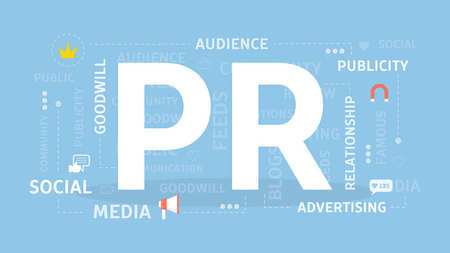
Whether you’re big or small, putting together a PR strategy pays off in multiple ways. A press release that a reporter turns into an article could send new customers to your door. Having a good reputation in your community strengthens your business’ sales and longevity. And good relationships with the media result in free publicity and building your reputation as experts in your field.
Public relations is building and maintaining a positive public view of your company. Unlike sales and marketing, businesses do not pay for good PR. Whatever the form it takes, it’s freely given by a newspaper or blog. Because of this, consumers tend to view positive PR as being more credible than paid advertising.
Here are four tips to help you build a successful PR strategy for your business.
Know your Markets
It would be a waste of time for a wholesale industrial cleaner manufacturer to send a press release to a mommy blogger. Part of a savvy PR strategy is knowing your market, both in terms of the customers you’re trying to reach and the media outlets where they can be found.
If you’re trying to identify the media your customers consume, start with your community. Who are the customers you want to reach? Are they new moms, or the buyer at a multinational corporation? Identifying this market may require reaching out to your sales and marketing department, or going back to your original business plan.
While identifying this market, always keep in mind how your company benefits them. How do your products or services make their lives better? This will help you when writing press releases or when giving quotes to media outlets. After identifying the market you’re trying to sell to, find the media they consume.
What news outlets do they share on their social media feeds? Where have they been quoted? Make a list of websites, news publications, blogs, or other media channels where you find your customers. These are the people you can target with your PR efforts.
Send Press Releases
A press release is a short, usually one-page, description of a major event in your business that you can send to the local newspaper, an industry publication, or a local influencer. Its contents and where you send it will depend upon your business’ size, product or service, and size.
For example, if you’re opening a new old-fashioned candy store with a soda counter and old-timey glass jars, you might send a press release to the local paper and a local mommy blogger. If you’re a small to mid-size start-up who just secured another round of funding, email your press release to both the local newspaper and an industry publication.
Include relevant details that readers might want to know, such as the new candy store’s location and hours of operation, but try to focus more on the story you’re telling rather than giving a list of facts.
Did memories of going to the local ten cent candy shop with your grandfather inspire your new store? Tell that story. Think of what customers would want to read and the value you bring them, and highlight that in your press release.
Be Responsive to the Media
It’s Halloween and a local reporter has reached out looking for a quote for a piece she’s writing on the most popular candy for trick-or-treaters. This is a great opportunity for the owner of that candy store to build a good relationship with that reporter and to bring more attention to her business. Always respond to media requests, even if they don’t directly plug your business.
A quick quote about which candy is selling fast this year may not plug your business directly. It could just have a tagline of, “says Ms. Smith, owner of Good Time Candy Store in Weymouth, Massachusetts.” That tagline, however, reminds readers of your store, which is particularly invaluable if it’s a local paper.
Building good relationships with the media ensures positive coverage of your business. They may be more likely to turn one of your press releases into a story. If you can become known as a credible source for industry-related pieces, it can generate a lot of free publicity.
Think about adding a press or media page to your website. Make it easy for the press to find contact information and other details about your business. Include details like the year you opened, biographies of important people in your company, links to past press releases, and your brand story. If other pages on your website have a more folksy or informal feel, keep this page more professional.
Cultivate Word-of-Mouth
A key component of public relations is your reputation. PR isn’t just getting the word out about your business and its accomplishments or products, it’s also building a positive image of your business in the public eye.
Solicit testimonials from satisfied customers or clients. You can add these to your website or social media feeds, and ask them to post them on online review sites. Construction companies often ask homeowners to put signs in their yard - “garage or new windows by” and their name that might inspire neighbors to ask about their work. Brainstorm ways to get the community talking about your business.
Larger companies may want to think about commissioning case studies. A case study narrows the focus to one client’s problem and tells the story of how your business helped solve it. Typically longer than a blog post, it’s an in-depth look at the benefits you brought to one customer. Your PR team can send the case study to media outlets, and your sales team can use it with potential clients.